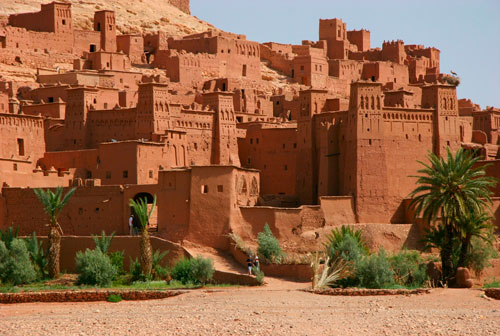Ouarzazate , nicknamed The door of the desert, is a city and capital of Ouarzazate Province in Drâa-Tafilalet region of south-central Morocco. Ouarzazate is at an elevation of 1,160 metres (3,810 ft) in the middle of a bare plateau south of the High Atlas Mountains. To the south of the town is the desert.
The town is chiefly inhabited by Berber-speakers, who constructed many of the prominent kasbahs (locally known as: iɣeṛman) and buildings for which the area is known. Ouarzazate is an important holiday destination in Morocco, as a base for excursions across the Draa Valley and into the desert. The fortified village (ksar) of Ait Benhaddou west of the city is a UNESCO World Heritage Site.
The Biggest Studios Of Africa
The Ouarzazate area is a noted film-making location, with Morocco’s biggest studios inviting many international companies to work here. Films such as Lawrence of Arabia (1962), The Living Daylights (1987), The Last Temptation of Christ (1988), The Mummy (1999), Gladiator (2000), Kingdom of Heaven (2005), Kundun (1997), Legionnaire (1998), Hanna (2011),The Hills Have Eyes (2006), and Salmon Fishing in the Yemen (2011) were shot here, as was part of the TV series Game of Thrones.
History Of Ouarzazate
For a long time, Ouarzazate was a small crossing point for African traders on their way to northern Morocco and Europe. During the French period, Ouarzazate expanded considerably as a garrison town, administrative centre and customs post. It is home to the kasbah of Taourirt, which was the casbah of the former caïd and later owned by T’hami El Glaoui. The Krupp field gun which secured Glaoui power is displayed outside the kasbah today.
The area is also known for its Ouazguita carpets with geometric designs of red-orange on black background.
Climate Of Ouarzazate
Ouarzazate is hot and dry in summer, but can be very cold in winter, with icy winds coming from the High Atlas Mountains.


